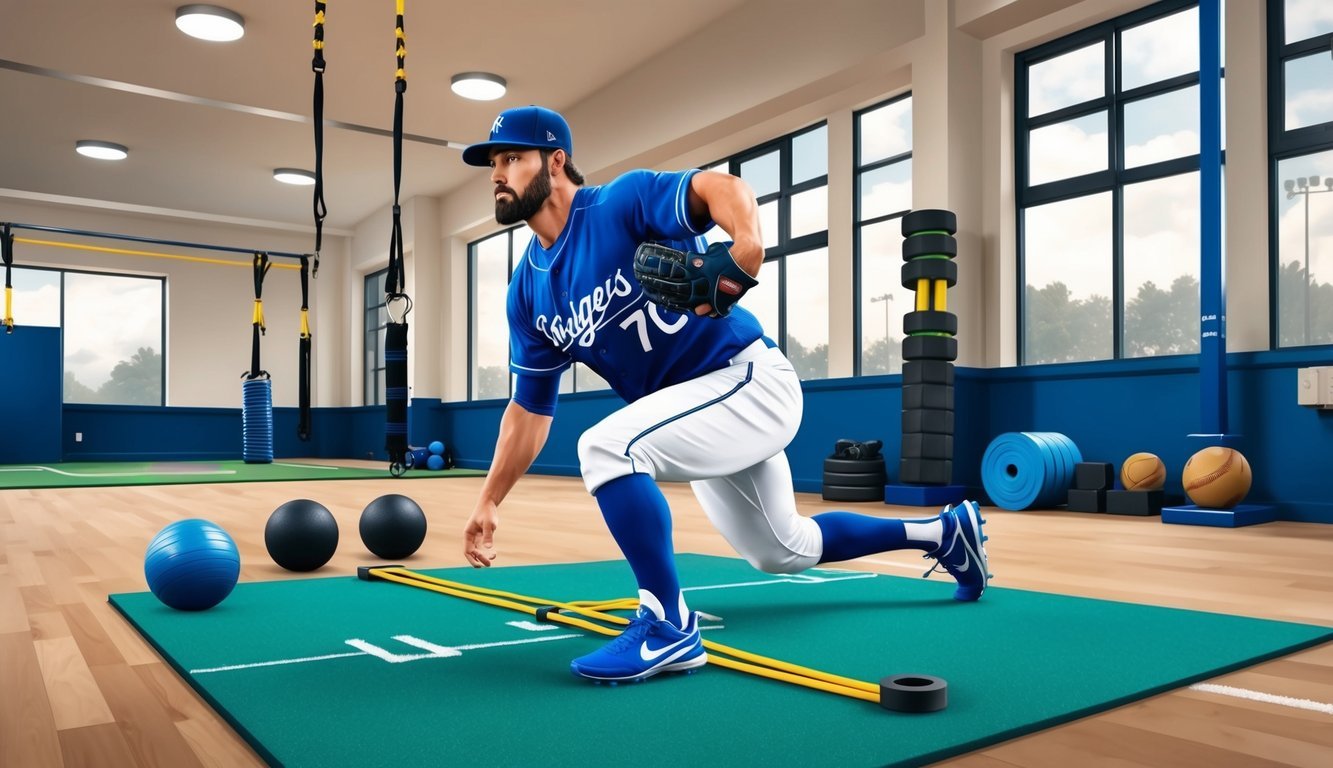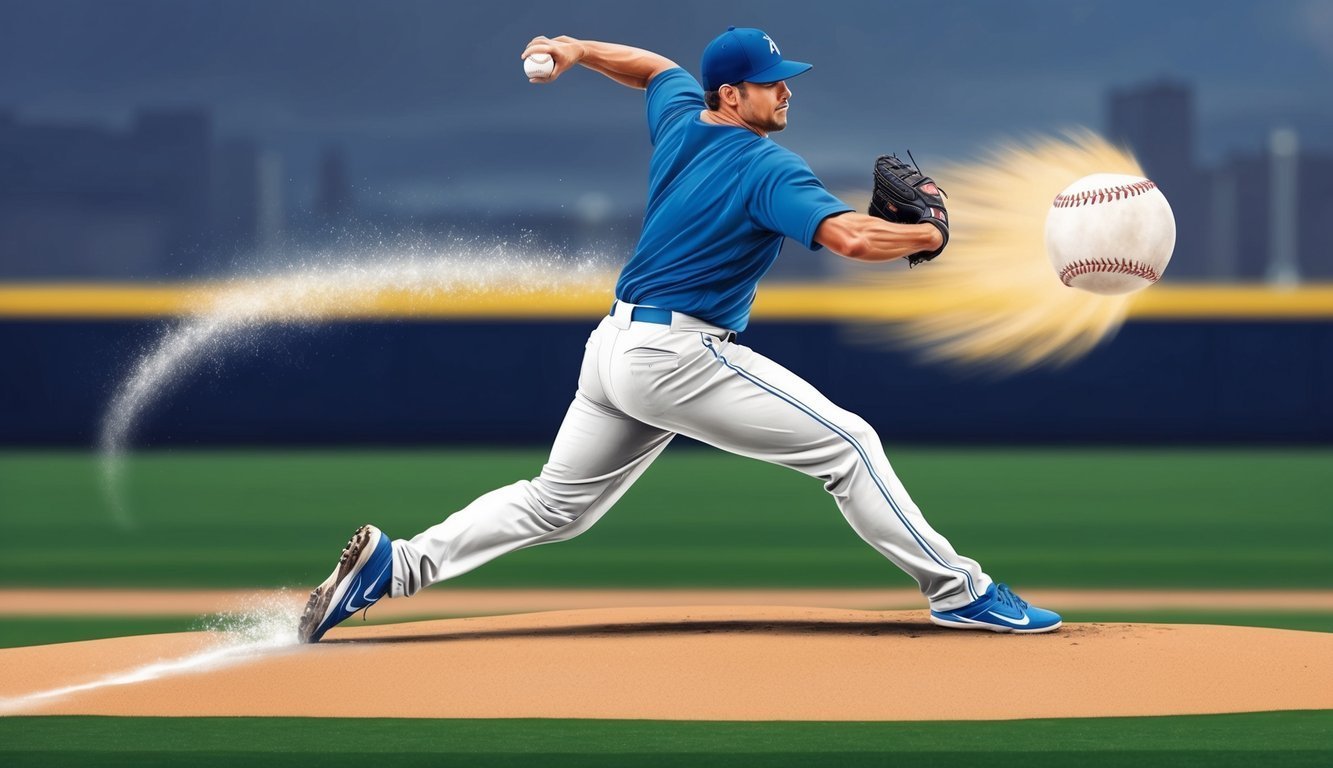Dynamic baseball pitching is revolutionizing the way players approach the game.
This innovative training method combines cutting-edge technology with time-tested techniques to enhance pitchers’ skills and performance.
Dynamic Baseball Training facilities offer personalized instruction to refine pitching mechanics, increase velocity, and improve overall effectiveness on the mound.
Aspiring pitchers of all levels can benefit from dynamic baseball training.
By focusing on efficient biomechanics and data-driven approaches, coaches help players unlock their full potential.
These programs emphasize the importance of proper arm mechanics, stride length, and follow-through to maximize power and accuracy.
Dynamic baseball pitching goes beyond traditional practice methods.
It incorporates advanced video analysis, pitch tracking systems, and strength training tailored specifically for pitchers.
This comprehensive approach helps players develop consistency, reduce injury risk, and gain a competitive edge in today’s fast-paced baseball landscape.
Fundamentals of Pitching Mechanics
Mastering pitching mechanics is crucial for any baseball player looking to excel on the mound.
A strong foundation in the basics can make all the difference in performance and injury prevention.
Balancing Act
Balance is the cornerstone of effective pitching mechanics.
A stable stance sets the stage for a powerful delivery.
Pitchers should start with their feet shoulder-width apart, weight evenly distributed.
During the windup, maintaining balance is key.
The pitcher shifts weight to the back leg, creating a solid base.
This allows for better control and more force generation.
As the motion progresses, the pitcher must stay balanced through the stride and follow-through.
A wobble or lean can throw off accuracy and reduce velocity.
Exercises like single-leg stands and yoga can improve a pitcher’s balance and stability.
The Pitching Motion
The pitching motion is a complex sequence of movements that must be executed smoothly.
It begins with the windup, where the pitcher rocks back and lifts the lead leg.
Next comes the stride.
The pitcher drives forward, extending the lead leg toward home plate.
Timing is crucial here – too long or short a stride can disrupt the entire motion.
The arm action follows, with the throwing arm moving through the cocking, acceleration, and deceleration phases.
Proper arm path and timing are essential for both power and safety.
Finally, the follow-through completes the motion.
A full follow-through helps maintain arm health and can improve control.
Importance of a Proper Grip
A pitcher’s grip on the ball can significantly impact the pitch’s movement and accuracy.
Different pitches require different grips, and mastering these is essential.
For a fastball, the standard grip places the index and middle fingers across the seams.
This allows for maximum velocity and minimal movement.
Breaking pitches like curveballs and sliders use modified grips to create spin.
The pitcher’s fingers apply pressure to different parts of the ball to achieve the desired effect.
Changeups rely on a grip that reduces velocity while maintaining arm speed.
This deception can throw off a batter’s timing.
Consistent hand positioning and pressure are key to repeatable results with any grip.
Physical Conditioning for Pitchers
Physical conditioning plays a crucial role in a pitcher’s performance and longevity.
It encompasses building core strength, maintaining arm health, and improving flexibility through strategic stretching.
Core Strength and Stability
A strong core is essential for pitchers to generate power and maintain balance during their delivery.
Planks, Russian twists, and medicine ball rotations are effective exercises for developing core stability.
Pitchers should incorporate these movements into their routine 3-4 times per week.
Cable rotations and standing wood chops mimic the pitching motion while strengthening obliques and improving rotational power.
These exercises help pitchers maintain proper mechanics throughout their delivery.
Stability ball exercises like rollouts and pikes challenge balance and engage deep core muscles.
These movements enhance a pitcher’s ability to control their body during the complex pitching motion.
Arm Care and Strengthening
Proper arm care is vital for injury prevention and maintaining velocity.
Shoulder external and internal rotations using resistance bands help strengthen the rotator cuff muscles.
Pitchers should perform these exercises daily.
Dumbbell exercises like lateral raises and reverse flies target the deltoids and upper back muscles, providing support for the throwing arm.
Aim for 2-3 sets of 10-12 repetitions, 2-3 times per week.
Weighted ball throws and plyometric push-ups can improve arm speed and power.
However, these should be introduced gradually and under professional supervision to avoid overuse injuries.
Strategic Stretching
Flexibility is key for pitchers to achieve a full range of motion and reduce injury risk.
Dynamic stretching before pitching helps warm up muscles and improve mobility.
Arm circles, leg swings, and torso twists are excellent pre-game stretches.
Static stretching is best performed after pitching or on rest days.
Focus on stretching the shoulder, chest, and hip flexors to counteract the tightness often caused by repetitive pitching motions.
Yoga can be a valuable addition to a pitcher’s routine, improving overall flexibility and body awareness.
Poses like downward dog and pigeon pose are particularly beneficial for pitchers.
Advanced Pitching Techniques

Mastering advanced pitching techniques can elevate a pitcher’s performance on the mound.
These methods focus on refining delivery, expanding pitch repertoire, and enhancing overall effectiveness.
Mastering Different Pitching Styles
Pitchers can develop various styles to keep batters guessing.
The power pitcher relies on blazing fastballs, while the finesse pitcher uses precision and movement.
Control pitchers excel at hitting specific spots in the strike zone.
Mixing styles can be highly effective.
A pitcher might start with power pitches, then switch to finesse later in the game.
This keeps hitters off-balance and guessing.
Developing a unique pitching style often involves tweaking arm angles or release points.
Some pitchers find success with a sidearm or submarine delivery, which can be especially tricky for batters to read.
Fine-Tuning Pitch Delivery
Refining pitch delivery is crucial for consistency and effectiveness.
Pitchers should focus on their windup and stretch positions, ensuring smooth, repeatable mechanics.
Key aspects to consider:
- Balance point
- Stride length
- Hip rotation
- Arm slot
- Release point
Pitchers can use video analysis to identify areas for improvement.
Slow-motion footage helps pinpoint subtle issues in timing or body positioning.
Rhythm plays a vital role in delivery.
A consistent tempo helps maintain accuracy and can disrupt a batter’s timing.
Pitchers should practice their delivery with and without the ball to ingrain proper muscle memory.
Developing the Curveball
The curveball is a potent weapon in a pitcher’s arsenal.
To throw an effective curve, pitchers must master the proper grip and release.
Curveball grip options:
- Traditional: Middle and index fingers across the seams
- Knuckle curve: Tucking one knuckle into the seams
The key to a sharp break is imparting spin at release.
Pitchers should focus on “pulling down” on the ball, creating topspin.
This action, combined with proper arm speed, produces the characteristic downward break.
Practice drills can help refine curveball technique.
Throwing into a net or against a wall allows pitchers to focus on spin and movement without worrying about location.
Pitcher-Specific Training and Recovery

Baseball pitchers require specialized training and recovery methods to maintain peak performance and prevent injuries.
These tailored approaches focus on enhancing pitching mechanics, building strength, and promoting efficient recovery between outings.
Tailored Workouts and Drills
Pitchers benefit from customized workout routines that target key muscle groups used in throwing.
These programs often include exercises like medicine ball rotational throws, resistance band work, and plyometric drills to improve explosiveness and arm speed.
Dynamic warm-ups are essential before pitching sessions.
These routines activate muscles and increase flexibility, preparing the body for the demands of pitching.
Coaches at facilities like Elkhorn Training Camp emphasize the importance of player-specific training programs.
Pitchers also engage in specialized drills to refine their mechanics.
These may include towel drills, long toss sessions, and bullpen work focused on command and pitch development.
Regular video analysis helps pitchers identify areas for improvement in their delivery.
Recovery and Injury Prevention
Proper recovery is crucial for pitchers to maintain arm health and prevent overuse injuries.
Ice therapy and compression sleeves are common post-pitching recovery tools.
Many teams now use advanced techniques like electrical stimulation and massage therapy to aid muscle recovery.
Rest days between outings are vital.
Pitchers often follow structured throwing programs that balance workload and recovery time.
Light cardio and flexibility exercises on off days help maintain fitness without overtaxing the arm.
Strength training for the rotator cuff and scapular muscles is key to injury prevention.
Pitchers incorporate exercises like external rotations and scapular retractions into their routines.
Core strengthening is also emphasized to improve stability and power transfer during pitching motions.
Leveraging Technology in Baseball

Baseball has embraced cutting-edge technology to enhance player performance and game strategy.
Teams and players now rely on data-driven insights and advanced tools to gain a competitive edge.
Data-Driven Player Development
Baseball organizations use sophisticated tracking systems to collect vast amounts of data on player performance.
Trackman and Rapsodo devices capture detailed metrics on pitches, including velocity, spin rate, and movement.
This information helps coaches identify areas for improvement in pitchers’ mechanics and pitch selection.
Batters benefit from these systems too.
They can analyze their swing patterns and study pitchers’ tendencies.
Teams use this data to tailor training programs to each player’s unique strengths and weaknesses.
Colleges and amateur teams have also adopted these technologies.
Young players now have access to professional-level analytics, accelerating their development.
Technology in Practice and Play
High-tech pitching machines like the Trajekt Arc have revolutionized batting practice.
These devices can replicate the exact pitch movement and velocity of specific MLB pitchers.
This allows batters to prepare for upcoming matchups with unprecedented accuracy.
Additionally, the Trajekt Arc enables players to practice against a variety of pitch types, including those elusive knuckleball pitching techniques that can be notoriously difficult to hit.
By offering batters the chance to face pitches that mimic the unpredictable movement of a knuckleball, they can develop strategies for better timing and anticipation.
This technological advancement not only enhances individual performance but also elevates team preparation for facing diverse pitching styles throughout the season.
During games, teams leverage real-time data to make informed decisions.
Managers use this information to optimize pitching rotations and adjust defensive positioning.
Meanwhile, players can review instant video replays to fine-tune their techniques between innings.
The integration of technology has fundamentally changed how baseball is played and taught.
From player development to in-game strategy, data-driven insights are now an essential part of America’s pastime.
